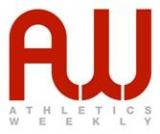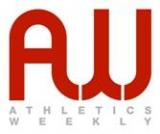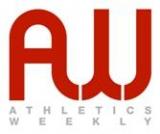Folders |
Ankle injuriesPublished by
Ankle sprains are one of the most common injuries to runners and repeated injuries to the area should not be ignored, writes Mark BuckinghamThe classic lateral ankle sprain is one that is known to most runners and most twists are settled rapidly with some ice and resting for a few days. However, repeated sprains indicate that there is a weakness that should not be ignored. A potentially avoidable twist just days before a race would be a frustrating occurrence, but it is nevertheless important to prevent long-term wear and tear on the joint. Recurrent sprains are the result of damage” to the balance system and ineffective awareness of where your foot is in space and during ground contact this is called proprioception. Around the ankle, in the ligaments and tendons and within the joint, are nerve endings that give information to the brain about proprioception. If your foot is not going to strike the ground properly, the brain should know this and alter its placement. If the ankle is about to roll, the brain then tells the surrounding muscles to contract and correct before it is too late. A twisted ankle affects these nerves and reaction pathways are thus slow or even non-existent. If you do not re-train it, it will not recover and you will continue to twist the ankle, which then sets up a vicious cycle. The ankle needs to be tested for strength of both inversion (turn foot in) and eversion (turn foot out). You should be able to resist the foot being pushed either way (see pics 1 and 2).
Any weakness needs to be corrected by use of a band as shown 3×15 reps to fatigue, or by the use of a cable pulley where you can go heavier, 8 reps and 5 sets (see pics 3 and 4 inversion and 5 and 6 eversion).
Calf strength is vital. You should be able to do 3×25 single-leg heel rises as a minimum. The control and proprioception is improved by challenging the nerves around the ankle. The use of simple wobble cushions, Bosu s or actual wobble boards are always a good place to start.
Small knee bends Close your eyes and repeat the above don t play catch though! Closing your eyes is important, because you get a huge amount of information about your balance from your eyes. Closing them makes you challenge the proprioception system. Little and often is the key and spending a couple of minutes a few times a day is effective. Once you have improved your balance control, move on to: Fast hops from one foot to the other, keeping on your toes Witty, Pask and Buckingham Physiotherapists have 18 years experience of working with the UK s elite runners at Olympic Games, World and European Championships for UK Athletics as well as all standards of runners from around the country. The practice provides the complete service for assessment and treatment of runners, from prevention to rehabilitation. Tel: 01604 601641 or go to www.wpbphysio.co.uk The post Ankle injuries appeared first on Athletics Weekly. Read the full article at: www.athleticsweekly.com
More news |













 Try single-leg standing on the cushion and try to balance (see picture 7) and use advanced techniques by doing the following:
Try single-leg standing on the cushion and try to balance (see picture 7) and use advanced techniques by doing the following: